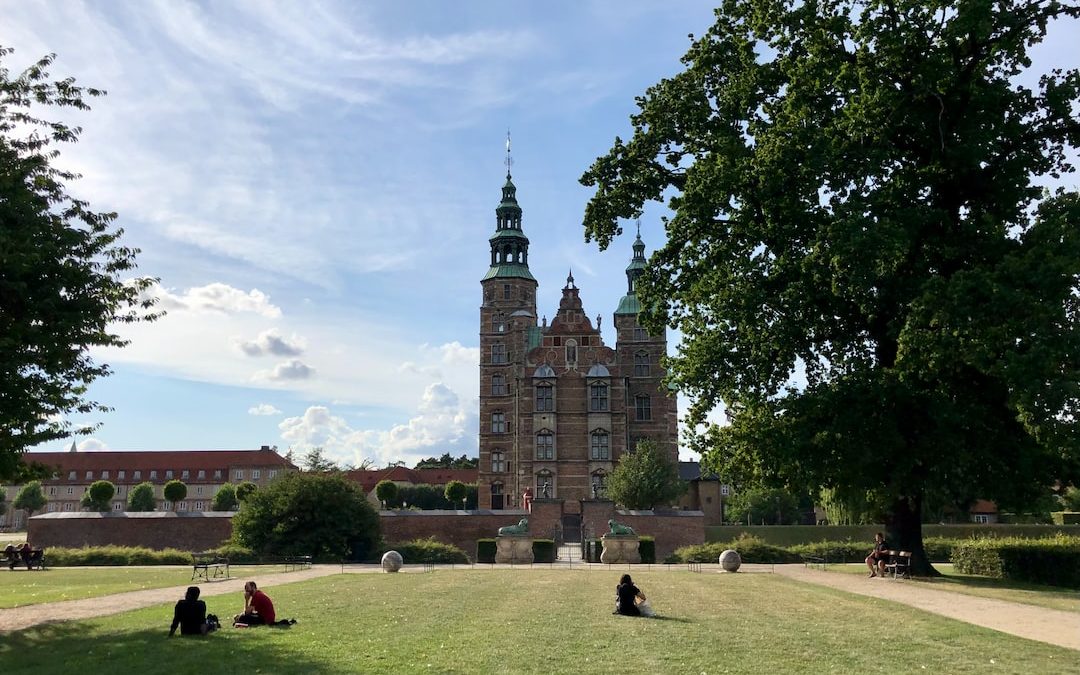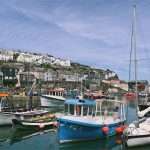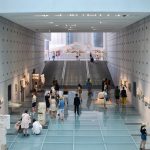Table of Contents
Discovering the Historical Landmarks of Copenhagen
Introduction
Copenhagen is one of the most beautiful cities in the world. It is also one of the oldest. This metropolis boasts a rich history and culture that span centuries, and is home to some of the most iconic landmarks in Europe. From the famous Little Mermaid statue to the regal Rosenborg Castle, the city is an architectural wonderland. Whether you’re a tourist or a local, discovering the historical landmarks of Copenhagen is a must-do.
The Little Mermaid
The Little Mermaid is an icon of Copenhagen. This bronze statue was created in 1913 by Edvard Eriksen and is based on the fairy tale of the same name by Danish author, Hans Christian Andersen. The statue is located in the harbour of Copenhagen and is one of the city’s most popular attractions. The Little Mermaid is a symbol of the city’s commitment to art and culture, and is a reminder of the city’s rich history.
History
The Little Mermaid statue was commissioned in 1909 by Carl Jacobsen, the son of beer brewer, Carlsberg. Jacobsen was a great admirer of the work of Hans Christian Andersen and wanted to honour the author with a monument. The statue was designed by Edvard Eriksen and was unveiled in August 1913. The statue has since become an icon of Copenhagen and is visited by thousands of tourists every year.
Location
The Little Mermaid is located in the harbour of Copenhagen. It is easy to find, as it is situated near the popular tourist spot, Langelinie Pier. The statue is close to a number of other attractions, such as the Gefion Fountain and the Amalienborg Palace.
Visit
Visiting the Little Mermaid is a must-do when in Copenhagen. The statue is open to the public and can be visited at any time. However, be aware that the statue is popular with tourists and can get crowded. It is recommended to visit in the morning or late evening to avoid the crowds.
Rosenborg Castle
Rosenborg Castle is a royal palace located in the centre of Copenhagen. It was built in the early 17th century by Christian IV and is considered one of the most iconic landmarks in the city. The castle is a popular tourist attraction and is a must-visit for anyone in Copenhagen.
History
Rosenborg Castle was built in the early 17th century by Christian IV. The castle was originally used as a royal residence, but was later turned into a museum. It is now a popular tourist attraction and is home to a number of artifacts and artworks.
Location
Rosenborg Castle is located in the centre of Copenhagen. It is close to the popular tourist attractions, the Amalienborg Palace and the National Museum of Denmark.
Visit
Rosenborg Castle is open to the public and can be visited at any time. However, it is recommended to visit the castle in the morning or early afternoon to avoid the crowds. The castle also offers guided tours, which are a great way to learn more about the history and architecture of the castle.
Kastellet
Kastellet is one of the oldest fortifications in the city of Copenhagen. It was built in the 17th century and is located in the centre of the city. It is a popular tourist attraction and a great way to see the city from a different perspective.
History
Kastellet was built in 1626 by Christian IV. The fortification was designed to protect the city from foreign invaders and was a strategic military stronghold. It was used as a military base for centuries, but is now a popular tourist attraction.
Location
Kastellet is located in the centre of Copenhagen. It is close to the popular tourist attractions, the Amalienborg Palace and the Rosenborg Castle.
Visit
Visiting Kastellet is a great way to explore the city from a different perspective. The fortification is open to the public and can be visited at any time. However, it is recommended to visit the fortification in the morning or early afternoon to avoid the crowds.
Tivoli Gardens
Tivoli Gardens is one of the most iconic attractions in Copenhagen. This amusement park was opened in 1843 and is one of the oldest in the world. It is a popular tourist attraction and a great way to experience the culture of Copenhagen.
History
Tivoli Gardens was opened in 1843 by Georg Carstensen. The park was designed as a way to entertain the citizens of Copenhagen and was inspired by the royal gardens of Europe. It has since become a popular tourist attraction and is home to a number of attractions, including rides, restaurants, and theatres.
Location
Tivoli Gardens is located in the centre of Copenhagen. It is close to the popular tourist attractions, the Amalienborg Palace and the Rosenborg Castle.
Visit
Visiting Tivoli Gardens is a must-do when in Copenhagen. The park is open to the public and can be visited at any time. However, it is recommended to visit the park in the morning or early afternoon to avoid the crowds. The park also offers a number of activities, such as rides and shows, which are a great way to experience the culture of Copenhagen.
Amalienborg Palace
Amalienborg Palace is the official residence of the Danish royal family. It is located in the centre of Copenhagen and is one of the most iconic landmarks in the city. The palace is a popular tourist attraction and is a great way to experience the culture of Copenhagen.
History
Amalienborg Palace was built in the 18th century by Frederick V. The palace was originally used as a royal residence, but is now open to the public and is a popular tourist attraction. It is now home to a number of artifacts and artworks and is a great way to experience the culture of Copenhagen.
Location
Amalienborg Palace is located in the centre of Copenhagen. It is close to the popular tourist attractions, the Rosenborg Castle and the National Museum of Denmark.
Visit
Visiting Amalienborg Palace is a must-do when in Copenhagen. The palace is open to the public and can be visited at any time. However, it is recommended to visit the palace in the morning or early afternoon to avoid the crowds. The palace also offers guided tours, which are a great way to learn more about the history and architecture of the palace.
The Round Tower
The Round Tower is one of the oldest landmarks in Copenhagen. It was built in the 17th century and is one of the most popular attractions in the city. The tower is a great way to experience the history and culture of Copenhagen.
History
The Round Tower was built in 1642 by Christian IV. The tower was originally used as an observatory, but is now open to the public and is a popular tourist attraction. It is home to a number of artifacts and artworks and is a great way to experience the culture of Copenhagen.
Location
The Round Tower is located in the centre of Copenhagen. It is close to the popular tourist attractions, the Amalienborg Palace and the Rosenborg Castle.
Visit
Visiting the Round Tower is a must-do when in Copenhagen. The tower is open to the public and can be visited at any time. However, it is recommended to visit the tower in the morning or early afternoon to avoid the crowds. The tower also offers guided tours, which are a great way to learn more about the history and architecture of the tower.
Church of Our Saviour
The Church of Our Saviour is one of the most iconic landmarks in Copenhagen. This church was built in the 17th century and is one of the city’s most popular attractions. The church is a great way to experience the culture of Copenhagen.
History
The Church of Our Saviour was built in 1682 by Christian IV. The church was designed as a place of worship and is now a popular tourist attraction. It is home to a number of artifacts and artworks and is a great way to experience the culture of Copenhagen.
Location
The Church of Our Saviour is located in the centre of Copenhagen. It is close to the popular tourist attractions, the Amalienborg Palace and the Rosenborg Castle.
Visit
Visiting the Church of Our Saviour is a must-do when in Copenhagen. The church is open to the public and can be visited at any time. However, it is recommended to visit the church in the morning or early afternoon to avoid the crowds. The church also offers guided tours, which are a great way to learn more about the history and architecture of the church.
Christiansborg Palace
Christiansborg Palace is the official residence of the Danish royal family. It is located in the centre of Copenhagen and is one of the most iconic landmarks in the city. The palace is a popular tourist attraction and is a great way to experience the culture of Copenhagen.
History
Christiansborg Palace was built in the 18th century by Frederick V. The palace was originally used as a royal residence, but is now open to the public and is a popular tourist attraction. It is now home to a number of artifacts and artworks and is a great way to experience the culture of Copenhagen.
Location
Christiansborg Palace is located in the centre of Copenhagen. It is close to the popular tourist attractions, the Rosenborg Castle and the National Museum of Denmark.
Visit
Visiting Christiansborg Palace is a must-do when in Copenhagen. The palace is open to the public and can be visited at any time. However, it is recommended to visit the palace in the morning or early afternoon to avoid the crowds. The palace also offers guided tours, which are a great way to learn more about the history and architecture of the palace.
Summary
Copenhagen is a city full of history and culture. It is home to some of the most iconic landmarks in Europe, such as the Little Mermaid statue, Rosenborg Castle, Kastellet, Tivoli Gardens, Amalienborg Palace, The Round Tower, and the Church of Our Saviour. Whether you’re a tourist or a local, discovering the historical landmarks of Copenhagen is a must-do. From the Little Mermaid to the regal Christiansborg Palace, the city is an architectural wonderland. Visiting these landmarks is a great way to experience the culture of Copenhagen and is a reminder of the city’s rich history.












